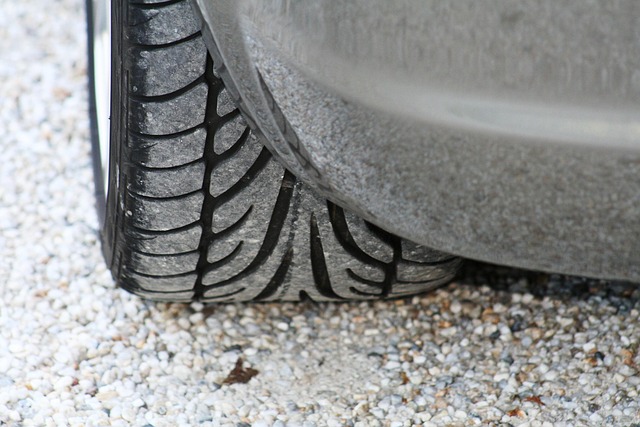Comprehensive Guide to Understanding Dunlop Tires Pricing
Navigating tire purchases requires understanding pricing structures, especially for established brands like Dunlop. With a heritage dating back to 1888, Dunlop offers various tire models designed for different vehicles and driving conditions. The price of Dunlop tires varies significantly based on numerous factors including tire size, performance category, and intended use. This guide provides essential information about Dunlop tire pricing to help consumers make informed purchasing decisions while maximizing value for their specific vehicle and driving needs.

What Factors Affect Dunlop Tire Price Points?
Several key elements influence the cost of Dunlop tires in the market. The size of the tire is perhaps the most obvious factor—larger tires generally command higher prices due to additional materials and manufacturing costs. Performance category also plays a significant role, with high-performance tires designed for sports cars and premium vehicles typically costing more than standard passenger tires. The specific technology incorporated into the tire design, such as Dunlop’s Noise Shield Technology or Multi-Tread Technology, can increase prices as these features enhance performance and durability.
Seasonal variations also affect pricing, with winter tires generally priced higher than all-season options due to their specialized rubber compounds and tread patterns. Additionally, the intended application—whether for passenger vehicles, SUVs, trucks, or commercial vehicles—creates natural price differentiations across the Dunlop catalog. Market conditions, including raw material costs and supply chain factors, can cause price fluctuations throughout the year.
What Are the Typical Dunlop Tire Price Ranges?
Dunlop tires span several price categories to accommodate different market segments and consumer needs. Entry-level Dunlop passenger tires typically range from $60 to $120 per tire, making them accessible options for budget-conscious consumers seeking reliable performance from a recognized brand. These tires often feature Dunlop’s core technologies while omitting some premium features to maintain affordability.
The mid-range category, priced between $120 and $200 per tire, represents Dunlop’s most popular segment. These tires typically incorporate additional performance features and offer enhanced durability, making them suitable for everyday drivers who want a balance of quality and value. Performance-oriented tires and specialty options like Dunlop’s winter and all-terrain tires generally fall into the premium category, ranging from $200 to $350+ per tire.
Commercial and specialty tires for heavy-duty applications can exceed $400 per tire depending on size and specifications. It’s worth noting that prices may vary significantly between retailers, and seasonal promotions or bundle discounts can substantially affect final costs.
How Do Common Dunlop Tire Models Compare in Price?
Dunlop’s diverse tire lineup includes models designed for specific applications and price points. Understanding how different models compare can help consumers identify options that meet both their performance requirements and budget constraints.
| Tire Model | Vehicle Type | Key Features | Price Range (Per Tire) |
|---|---|---|---|
| Dunlop SP Sport Maxx RT | Passenger/Performance | Ultra-high performance, enhanced cornering grip | $150-$280 |
| Dunlop Grandtrek AT20 | SUV/Light Truck | All-terrain capability, balanced on-road comfort | $140-$240 |
| Dunlop Winter Maxx WM02 | Passenger | Winter performance, ice and snow traction | $110-$190 |
| Dunlop Signature HP | Passenger | All-season performance, extended treadwear | $90-$170 |
| Dunlop Direzza DZ102 | Passenger/Performance | Affordable performance, improved wet handling | $80-$150 |
| Dunlop Grandtrek PT3 | SUV/Crossover | Highway all-season, reduced road noise | $120-$220 |
Prices, rates, or cost estimates mentioned in this article are based on the latest available information but may change over time. Independent research is advised before making financial decisions.
The pricing hierarchy generally follows performance capabilities, with specialized tires commanding premium prices. Dunlop’s performance tires like the SP Sport series typically cost more than standard passenger options, while SUV and light truck tires fall somewhere in between. Regional availability may also affect which models are accessible and how they’re priced in different markets.
What Strategies Can Maximize Value When Purchasing Dunlop Tires?
Savvy consumers can employ several strategies to optimize their Dunlop tire purchase. Timing purchases to coincide with seasonal promotions can yield significant savings, as many retailers offer discounts during model changeovers or during spring and fall seasons when demand typically increases. Many retailers offer mail-in rebates on Dunlop tires during promotional periods, which can reduce costs by $50-$100 per set.
Bundle purchases that include installation services often provide better overall value than purchasing tires and installation separately. Additionally, many retailers offer price matching guarantees that allow consumers to leverage competitive pricing across different vendors. Taking advantage of free services that come with tire purchases, such as rotation and balancing for the life of the tire, can extend tire longevity and improve the long-term value proposition.
When evaluating costs, consider the tire’s expected mileage warranty as well. A slightly more expensive tire with significantly longer tread life may provide better value over time. Similarly, tires with fuel-efficient designs may offset their higher purchase price through reduced fuel consumption, particularly for high-mileage drivers.
How Do Installation and Maintenance Affect Total Dunlop Tire Costs?
The purchase price represents only part of the total cost of ownership for Dunlop tires. Installation typically adds $15-$25 per tire, while additional services like wheel balancing ($10-$15 per tire), alignment ($80-$150), and valve stem replacement ($5-$10 per tire) can increase initial costs. Many retailers offer package deals that bundle these services at a discount when purchasing a complete set.
Long-term maintenance also affects the total cost equation. Regular rotation every 5,000-7,000 miles extends tire life and ensures even wear. Some retailers offer free rotation and balancing for the life of tires purchased from them, representing potential savings of $200-$300 over the tire’s lifespan. Proper inflation maintenance not only extends tire life but also optimizes fuel economy, creating additional cost benefits.
Understanding the full cost picture—including purchase price, installation, and ongoing maintenance—provides a more accurate assessment of the value proposition offered by different Dunlop tire models and retailers.




